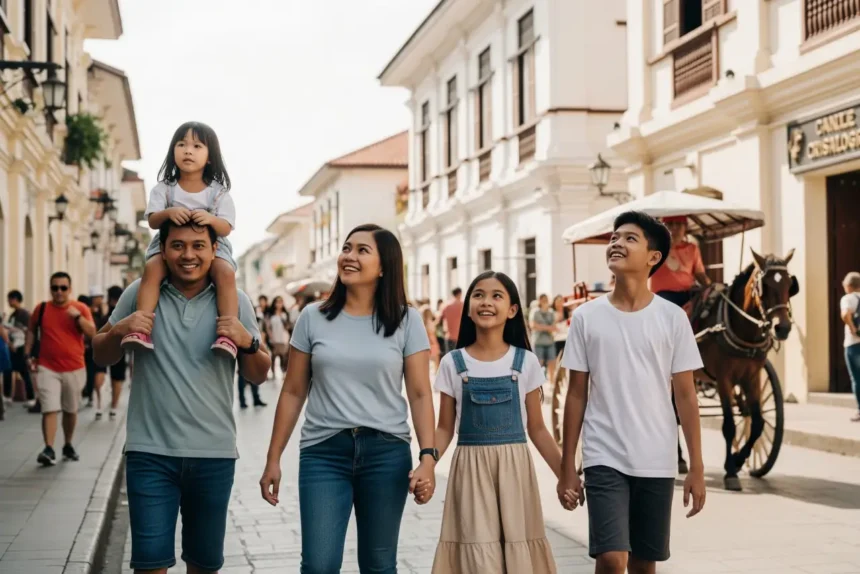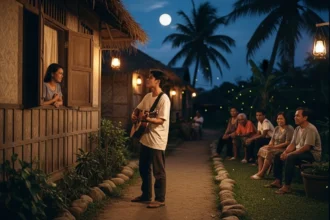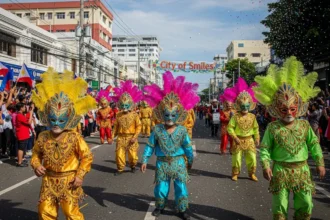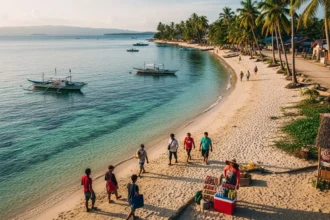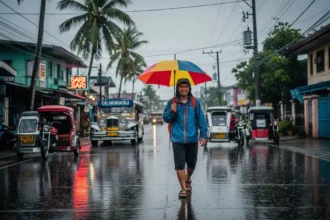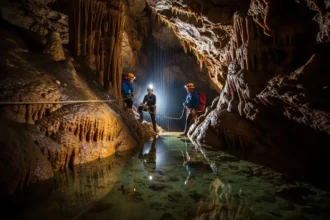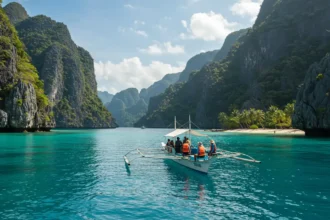When you hear “Philippine historical sites,” what’s the first image that comes to mind? For most of us, it’s the iconic stone walls of Intramuros, a somber walk through Fort Santiago, or perhaps a sunset view of Rizal Park. And while these Manila landmarks are the hallowed ground of our history, they are only the first chapter of a much larger story.
- 1. Barasoain Church, Malolos, Bulacan
- 2. Aguinaldo Shrine, Kawit, Cavite
- 3. Calle Crisologo, Vigan, Ilocos Sur
- 4. Banaue Rice Terraces, Ifugao
- 5. Corregidor Island, off the coast of Cavite
- 6. Magellan’s Cross Pavilion, Cebu City
- 7. Miagao Church, Miagao, Iloilo
- 8. The Ruins, Talisay, Negros Occidental
- 9. Rizal Shrine, Dapitan, Zamboanga del Norte
- 10. Sheik Karim al-Makdum Mosque, Simunul, Tawi-Tawi
- Frequently Asked Questions
- A Journey’s End, A Deeper Beginning
The true epic of the Filipino nation wasn’t written in just one city. It’s a vibrant saga with chapters scattered across our 7,000 islands-from the misty mountains of the Cordilleras to the tranquil shores of Mindanao. To truly understand our identity is to travel to these places, to stand where our heroes stood, and to feel the echoes of their struggles and triumphs.
This guide is your invitation to go beyond the capital. We’re embarking on a journey to discover 10 incredible national historical landmarks that every Filipino should visit at least once. It’s time for a different kind of byahe-one that connects us more deeply with our roots and the very soul of our country. Pack your bags, and let the journey through time begin.
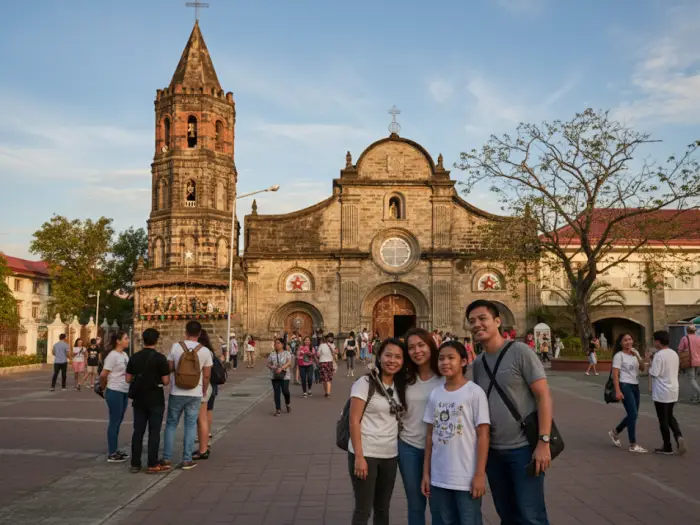
1. Barasoain Church, Malolos, Bulacan
- “The Cradle of the First Philippine Republic.”
There’s a unique silence that greets you when you step inside Barasoain Church. It’s a silence filled with history. More than just a place of worship, this is the very ground where the dream of a sovereign Filipino nation took its first, defiant breath. This is where the Malolos Congress convened in 1898 to draft the constitution that would give birth to the First Philippine Republic. Standing here, you realize this isn’t just a building; it’s our nation’s birth certificate carved in stone and wood-a true dambana ng ating kasaysayan (shrine of our history).
Google Map Link: https://maps.app.goo.gl/HxEZBkyhavGQcAWy7
What to Expect: The church’s beautiful Baroque architecture, with its famed bell tower, is a photographer’s dream, especially in the golden light of the late afternoon. But don’t just stay outside. The real treasure is the Museo ng Republika ng 1899 inside. It’s a surprisingly modern and interactive museum that uses videos, light shows, and well-preserved artifacts to tell the story of our revolution. And yes, finding that perfect spot to recreate the image from the old ten-peso bill is a rite of passage. It truly gives you the feels.
Traveler’s Tip: Barasoain Church is an easy day trip from Manila. To make the most of it, go on a weekday to avoid the crowds and have the space for quiet reflection. After your visit, you absolutely must find a local shop selling the original Empanada de Kaliskis-its name comes from the flaky, fish-scale-like crust. It’s a taste of history in itself.
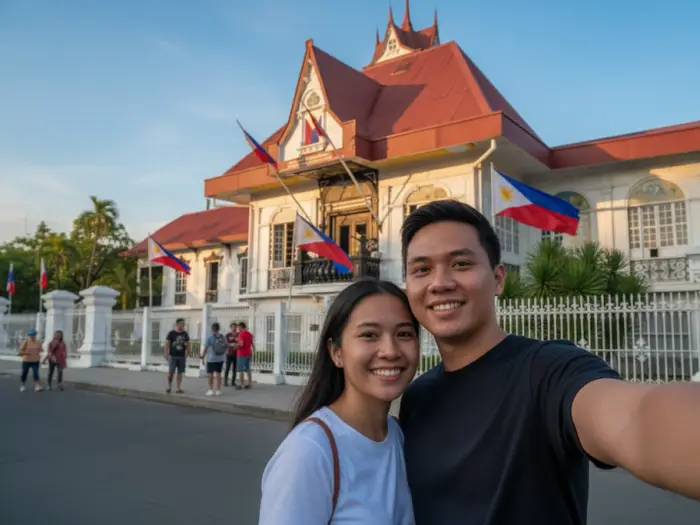
2. Aguinaldo Shrine, Kawit, Cavite
- “The Balcony Where Our Freedom Was Proclaimed.”
Every Filipino student knows the date: June 12, 1898. At the Aguinaldo Shrine in Kawit, Cavite, that date transforms from a textbook entry into a living, breathing moment. Standing on the quiet, sprawling grounds and looking up at that iconic balcony, you can almost hear the cheers and the soaring notes of our national anthem being played for the first time. This is where General Emilio Aguinaldo waved the National Flag of the Philippines and declared our hard-won independence from Spain. It’s a powerful, goosebumps-inducing experience that connects you directly to the pride and hope of our ancestors.
Google Map Link: https://maps.app.goo.gl/f417x4eP4RKQPFeq9
What to Expect: The ancestral home is a marvel of Filipino heritage, but it’s the hidden details that make it unforgettable. A guided tour is essential here. The guides will show you the secret passages used by revolutionaries, the clever compartments for hiding documents, and even a bomb shelter. The house is a living museum of ingenuity and patriotism. The “Independence Balcony” you see today is a later addition, but it perfectly frames the historical significance of the window from which the original proclamation was made.
Traveler’s Tip: While visiting on Independence Day is historic, it’s also incredibly crowded. For a more intimate experience, go on a regular weekday. Afterwards, dive into Cavite’s rich culinary scene. Ask a local for directions to the best Pancit Puso (noodles with banana blossom) or grab a block of Quesillo (local white cheese) from a roadside vendor. It’s the perfect way to cap off a historic day trip.
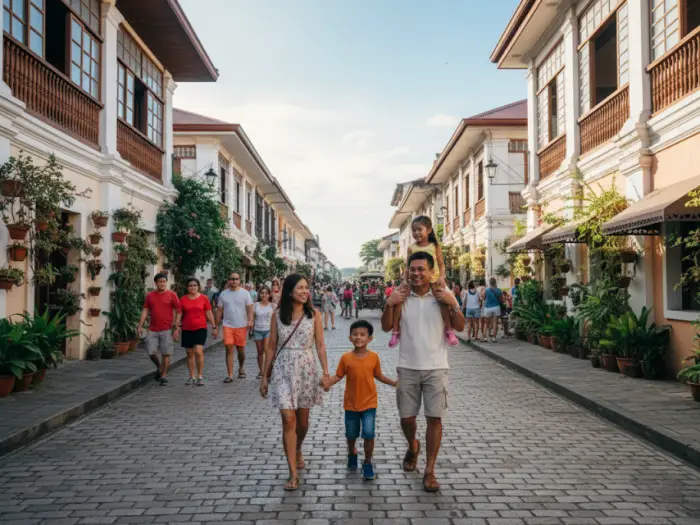
3. Calle Crisologo, Vigan, Ilocos Sur
- “A Timeless Walk Through Spanish Colonial Philippines.”
Prepare to be transported back in time. Walking along the cobblestone streets of Calle Crisologo is the closest you can get to experiencing the Philippines during the Spanish colonial era. This beautifully preserved street, a UNESCO World Heritage Site, is lined with ancestral houses that have stood for centuries. The clip-clop of a passing kalesa, the warm glow from the capiz shell windows, and the intricate woodwork of the balconies-it all combines to create a magical atmosphere that feels a world away from modern life.
Google Map Link: https://maps.app.goo.gl/sPsdFcvntq5sPqvRA
What to Expect: By day, Calle Crisologo is a bustling hub of activity. Souvenir shops sell everything from Inabel weaves to miniature furniture, while cafes serve up local delicacies. But the real magic happens at dusk. As the day-trippers leave and the street lamps cast a golden glow on the cobblestones, the street transforms. It becomes quiet, romantic, and profoundly historic. Take your time, walk from one end to the other, and just absorb the ambiance.
Traveler’s Tip: The best time for a stroll is early in the morning before the crowds arrive or late at night when it’s more peaceful. And you simply cannot leave Vigan without trying two things: the crunchy, savory Vigan Empanada (best eaten fresh from a street vendor) and the garlicky Vigan Longganisa for breakfast. For a hands-on experience, visit a local pagburnayan (pottery-making shop) to see how the famous burnay jars are crafted.

4. Banaue Rice Terraces, Ifugao
- “The Stairway to the Heavens, An Ancient Engineering Marvel.”
This isn’t a landmark built of stone or wood, but one carved into the very earth by our ancestors. The Banaue Rice Terraces are a living cultural landscape and a testament to the ingenuity of the Ifugao people. For 2,000 years, these hand-carved terraces have followed the contours of the mountains, creating a breathtaking panorama that changes with the seasons. Often called the “Eighth Wonder of the World,” this is more than a tourist spot; it’s a symbol of a community’s harmony with nature and a masterpiece of ancient engineering.
Google Map Link: https://maps.app.goo.gl/DRYBVCBR12nY7wHJ9
What to Expect: The sheer scale of the terraces is humbling. The most famous viewpoint, the one depicted on the old 1,000-peso bill and the 20-peso bill, offers a jaw-dropping panoramic view. But the best way to experience the terraces is to trek through them. With a local guide, you can walk along the rice paddies, meet the Ifugao farmers who are the modern-day custodians of this heritage, and even visit traditional villages like Batad.
Traveler’s Tip: Plan your visit according to the rice cycle. The terraces are most vibrant green from April to July and a stunning gold from October to November. Always hire a local guide; their knowledge is invaluable, and it supports the community directly. And don’t forget to wear proper trekking shoes-those rice paddy walls are no joke!
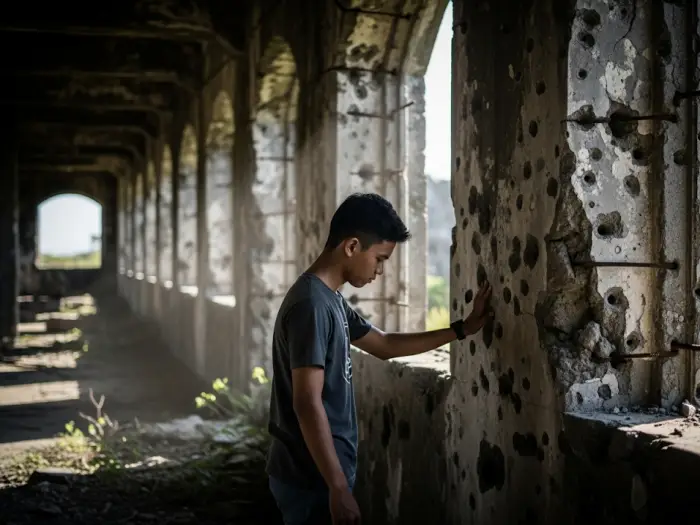
5. Corregidor Island, off the coast of Cavite
- “An Island Fortress of Courage and Sacrifice.”
A short ferry ride from Manila Bay takes you to a place of profound silence and solemnity: Corregidor Island. This isn’t a place of celebration, but one of remembrance. Known as “The Rock,” this island fortress was the last bastion of Filipino and American defense against the Japanese invasion during World War II. It was here that thousands of soldiers made their last stand, and where General Douglas MacArthur uttered his famous promise, “I shall return.” To visit Corregidor is to pay tribute to their incredible bravery.
Google Map Link: https://maps.app.goo.gl/ceYU7ykX1DTM54jj6
What to Expect: The island is a massive open-air museum. The best way to see it is through the guided tram tour, which takes you to the key sites: the skeletal ruins of the Mile-Long Barracks, the imposing gun emplacements of Battery Way and Battery Hearn, and the Pacific War Memorial. The highlight for many is the light-and-sound show inside the Malinta Tunnel, which powerfully recounts the events that took place within its dark, historic confines.
Traveler’s Tip: Wear your most comfortable walking shoes and bring plenty of water and sun protection-the island is huge and exposed. While the day tour is excellent, consider the overnight stay. The sunset and sunrise over the island are serene, and some tours offer a nighttime tunnel walk for an extra spooky, atmospheric experience.
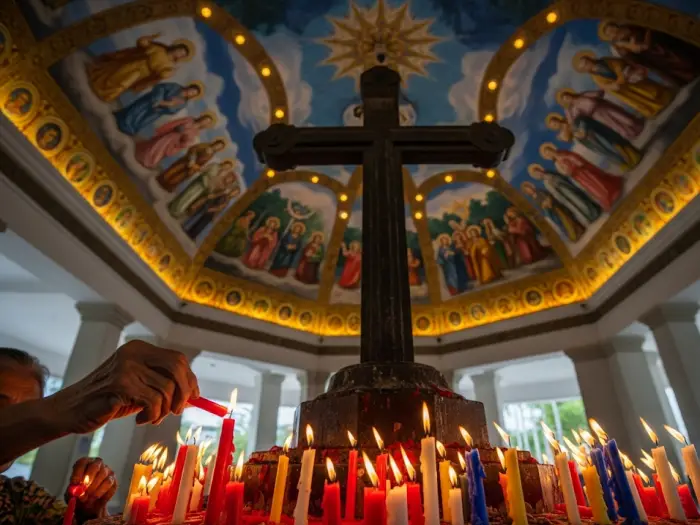
6. Magellan’s Cross Pavilion, Cebu City
- “Marking the Dawn of Christianity in the Philippines.”
In the heart of bustling Cebu City stands a small chapel that holds monumental significance. This is where the story of Christianity in the Philippines begins. The Magellan’s Cross Pavilion houses a large wooden cross that is believed to be the very one planted by Ferdinand Magellan’s party in 1521. This single act symbolized the baptism of Rajah Humabon, his wife, and hundreds of his followers, marking the start of a new faith that would shape the nation’s destiny. It is a pilgrimage site not just for the devout, but for anyone interested in the pivotal moments of our history.
Google Map Link: https://maps.app.goo.gl/YgmHLm8Rk83KLp2B8
What to Expect: The pavilion itself is a beautiful sight. Look up at the ceiling and you’ll see a stunning mural depicting the historical events of Magellan’s arrival and the first baptism. The centerpiece, of course, is the cross, which is encased in a protective tindalo wood covering to prevent people from chipping away pieces for souvenirs. The atmosphere is vibrant and uniquely Filipino; you’ll see devotees lighting candles while elderly women perform the traditional sinulog prayer dance for a small fee.
Traveler’s Tip: Magellan’s Cross is located right beside the Basilica Minore del Santo Niño, home to the revered image of the Child Jesus that Magellan gave as a baptismal gift. You must visit both to get the full story. After soaking in the history, take a short walk to the Carbon Market to experience local life or find a restaurant that serves authentic Cebu Lechon.
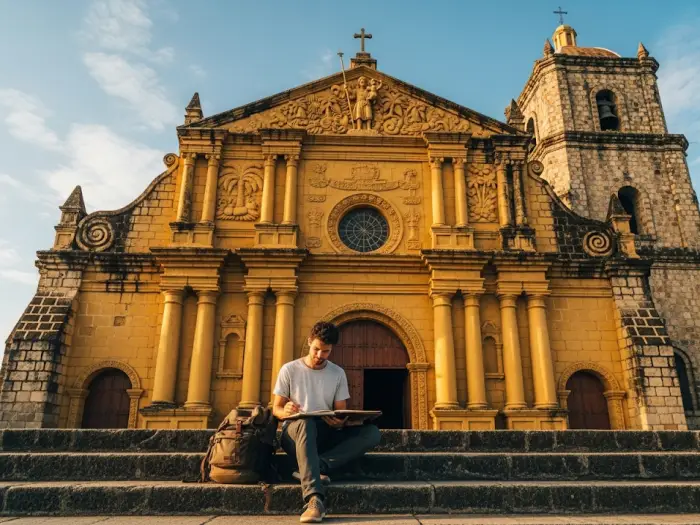
7. Miagao Church, Miagao, Iloilo
- “A Fortress of Faith, A UNESCO World Heritage Treasure.”
From a distance, the Miagao Church (or the Church of Saint Thomas of Villanova) looks like a golden fortress basking in the Ilonggo sun. And in many ways, it was. Built in 1797, this UNESCO World Heritage Site is one of the most magnificent examples of the “fortress-baroque” style in the Philippines. Its thick walls and imposing twin bell towers of unequal heights were designed to protect the town from frequent invasions by Moro raiders. This church is a breathtaking symbol of the people’s deep faith and their unwavering will to survive.
Google Map Link: https://maps.app.goo.gl/EcnD2GbtmJxrvKFa8
What to Expect: The star of the show is the church’s intricate facade, which is a masterpiece of Filipino artistry. Instead of a typical European saint, the central figure is St. Christopher, depicted with local features, carrying the Christ Child on his back amidst lush coconut, papaya, and guava trees. It’s a beautiful fusion of Catholic belief and local culture. The warm, yellowish-brown color of the church comes from the unique combination of adobe, coral, and limestone used in its construction.
Traveler’s Tip: Visit in the late afternoon. The setting sun casts a spectacular golden glow on the facade, making its details pop-a phenomenon photographers call the “golden hour.” Miagao is about an hour’s drive from Iloilo City, making for a perfect side trip. On your way back, stop by a local restaurant in the city to savor a bowl of authentic, steaming La Paz Batchoy.
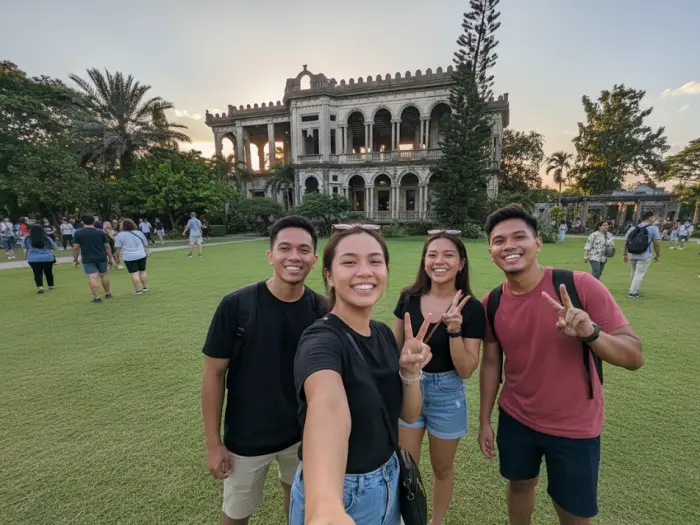
8. The Ruins, Talisay, Negros Occidental
- “The ‘Taj Mahal of Negros,’ A Monument to Undying Love.”
Not all historical landmarks are born from war or religion; some are born from love. The Ruins are the beautiful, skeletal remains of a grand mansion built in the 1920s by sugar baron Don Mariano Ledesma Lacson for his beloved Portuguese wife, Maria Braga. After her tragic death, he poured his grief and love into building this magnificent Italianate home in her memory. Tragically, it was intentionally burned by Filipino guerrillas during WWII to prevent it from becoming a Japanese headquarters. What’s left is a hauntingly beautiful shell-a testament to a love that endured through loss and war.
Google Map Link: https://maps.app.goo.gl/ayY4v8rJvbBzco2D8
What to Expect: It’s easy to see why this is called the “Taj Mahal of Negros.” The structure is incredibly romantic and dramatic, especially against the backdrop of a setting sun. You can freely explore the grounds, wander through the grand arches, and imagine the opulent parties that once echoed through its halls. The remaining concrete frame is surprisingly elegant, with intricate details still visible. There’s a lovely restaurant on-site, making it a perfect spot for a relaxing afternoon.
Traveler’s Tip: Without a doubt, the best time to visit is during the golden hour before sunset. The light filtering through the empty windows is pure magic and makes for stunning photographs. The Ruins are located just outside Bacolod City. After your visit, treat yourself to a true Negrense culinary experience: a plate of authentic Chicken Inasal followed by a decadent slice of cake from the legendary Calea Pastries & Coffee in Bacolod.
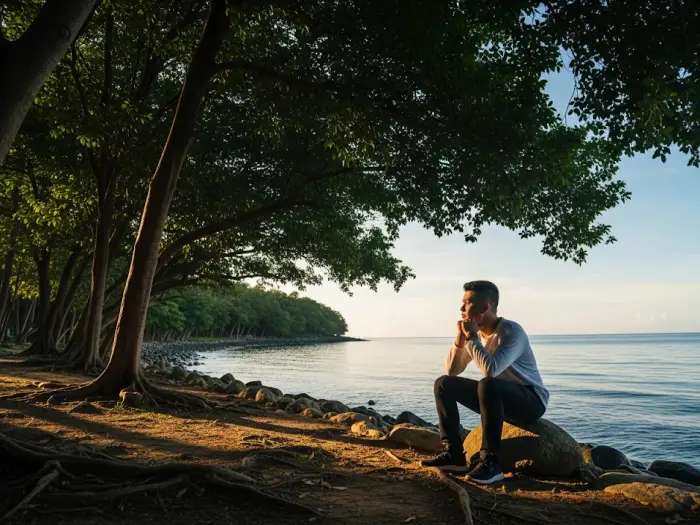
9. Rizal Shrine, Dapitan, Zamboanga del Norte
- “A Glimpse into the Life and Genius of Our National Hero in Exile.”
We know of Dr. Jose Rizal the martyr, the writer, the revolutionary thinker. But in Dapitan, you meet Rizal the man. The Rizal Shrine is the sprawling 16-hectare estate that Rizal purchased and developed during his four-year exile from 1892 to 1896. This wasn’t a prison for him; it was his canvas. He built a school, a hospital, and a water system. He taught local boys, treated patients for free, and documented the local flora and fauna. To walk these peaceful, seaside grounds is to witness the incredible productivity and resilience of our national hero in the face of adversity.
Google Map Link: https://maps.app.goo.gl/2Z86H1hSsXuKBqhs7
What to Expect: The shrine feels less like a museum and more like a serene park. You can explore faithful replicas of the bamboo and nipa structures Rizal built: the Casa Residencia (his main house), the Casa Redonda (a clinic for his students), and the Casitas de Salud (hospital wards). Don’t miss the aqueduct system he engineered, a marvel of its time. The highlight is “Mi Retiro Rock,” a naturally heart-shaped rock where Rizal would sit to write his poetry and watch the sunset. It’s a profoundly personal and inspiring place.
Traveler’s Tip: The Rizal Shrine in Dapitan is best explored on foot, so wear comfortable shoes. It’s located near the city proper, and you can easily hire a tricycle to take you there. To make the trip even more worthwhile, plan a visit to the nearby Dakak Park and Beach Resort for some leisure time after your historical tour. The closest airport is in Dipolog City, about a 30-45 minute drive away.
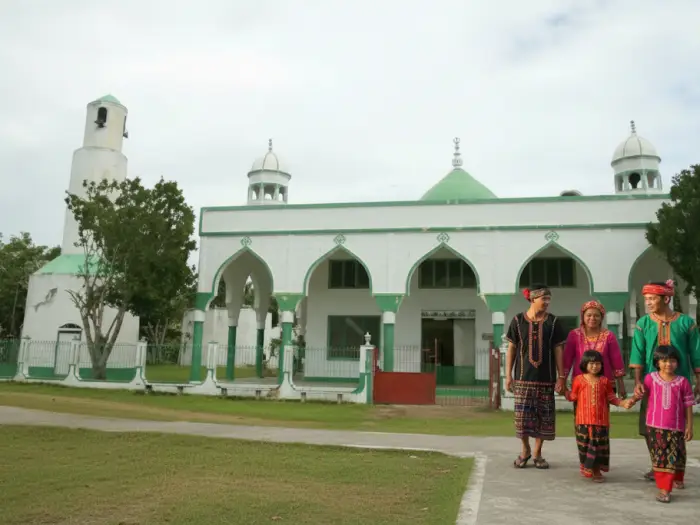
10. Sheik Karim al-Makdum Mosque, Simunul, Tawi-Tawi
- “The First and Oldest Mosque in the Philippines, A Pillar of Islamic Faith.”
Our journey concludes at a site that predates the arrival of the Spanish by over 150 years. The Sheik Karim al-Makdum Mosque in Simunul, Tawi-Tawi, is recognized as the birthplace of Islam in the Philippines. It was founded in 1380 by an Arab trader and missionary, marking the beginning of a rich Islamic heritage that is a vital part of our national identity. This isn’t just a landmark for Mindanao; it’s a landmark for the entire country, representing a deep and enduring stream of our cultural history.
Google Map Link: https://maps.app.goo.gl/diknREn22p8fMgqW7
What to Expect: The mosque you see today is a modern structure, but what makes it sacred and historically priceless are the four ancient wooden pillars from the original 14th-century mosque, which are preserved inside. Touching these pillars is like touching the very dawn of Islam in the archipelago. The site is not a grand tourist complex but a living place of worship. The atmosphere is one of profound peace and spirituality, set against the stunning turquoise waters that Tawi-Tawi is known for.
Traveler’s Tip: A trip to Simunul requires planning and, most importantly, respect. This is a deeply religious community. Dress modestly (cover your shoulders and knees; women should consider bringing a headscarf). It’s best to coordinate your visit with local tourism officials or a reputable guide. Fly into Sanga-Sanga Airport in Tawi-Tawi, and from there, arrange a boat to Simunul Island. A visit here is more than a trip; it’s an immersive cultural experience that will leave you with a deeper appreciation for the diversity of the Philippines.
Frequently Asked Questions
- What’s the best time of year to visit these landmarks? Generally, the dry season from December to May is ideal for traveling in the Philippines. However, for the Banaue Rice Terraces, the best views are during the greenest months (April-July) or harvest season (October-November). Always check local weather forecasts before you go!
- Are most of these sites family-friendly and accessible for kids? Yes, most are! Places like the Aguinaldo Shrine, Rizal Shrine, and The Ruins have open grounds perfect for kids. Corregidor’s tram tour is engaging for all ages. However, trekking in Banaue might be challenging for very young children, and a trip to Simunul requires more rigorous travel planning.
- Do these historical landmarks have entrance fees? It’s a mix. Many national shrines managed by the government, like the Aguinaldo and Rizal Shrines, are often free of charge but welcome donations. Privately-owned sites like The Ruins and tour-dependent locations like Corregidor Island have fixed entrance and package fees. It’s best to check their official social media pages for the latest rates.
- What should I wear when visiting these historical places? Comfort is key! Wear light, breathable clothing and comfortable walking shoes. For religious sites like Barasoain Church, Miagao Church, and especially the Sheik Karim al-Makdum Mosque, always dress modestly. This means covering your shoulders and knees. Bringing a scarf or sarong is always a good idea.
- Is it necessary to hire a local guide? For some places, it’s highly recommended. A guide for the Aguinaldo Shrine can show you all the secret passages, and you absolutely need one for trekking in Banaue. For other sites like Calle Crisologo or The Ruins, you can explore freely, but a guide can always provide deeper historical context.
- How do I get to Corregidor Island? The primary way to get to Corregidor is via a ferry service that departs from a terminal in Manila Bay (usually near the Mall of Asia). It’s best to book your day tour or overnight tour package in advance, as this typically includes the round-trip ferry ticket, the guided tram tour on the island, and a lunch buffet.
- Is it safe to travel to Tawi-Tawi to visit the mosque? While Tawi-Tawi has faced security challenges in the past, the situation has significantly improved, especially in peaceful municipalities like Simunul. The key is proper planning. It is highly advisable to coordinate with the provincial tourism office or a trusted local guide who can ensure your safety and guide you respectfully through the community.
- Can I visit Barasoain Church and the Aguinaldo Shrine on the same day? Technically, it’s possible for a very determined traveler, but it would be extremely rushed and tiring as they are in opposite directions from Manila (Bulacan is North, Cavite is South). It’s much better to dedicate a separate day trip for each to fully appreciate the history and the local area.
- Any photography tips for these locations? For Calle Crisologo and The Ruins, the “golden hour” (just after sunrise or before sunset) provides the most magical light. For churches like Miagao, the afternoon sun illuminates their facades beautifully. When inside museums or places of worship, always check if flash photography is allowed-it usually isn’t.
- What’s the most immersive way to experience the Banaue Rice Terraces? While the viewpoints are stunning, the most unforgettable experience is to stay overnight in a traditional Ifugao hut in a village like Batad. Waking up to the sight of the terraces enveloped in morning mist, with no sound but nature, is a core memory you will cherish forever.
A Journey’s End, A Deeper Beginning
From the proclamation of our republic in Luzon, to the fortress churches of Visayas, to the very cradle of Islam in Mindanao-our journey has shown that the story of the Philippines is vast, complex, and beautiful. These ten landmarks are more than just destinations; they are invitations. They invite us to step out of our comfort zones, to listen to the whispers of the past, and to understand the diverse threads that make up our national tapestry.
So, on your next vacation, consider trading a day at the beach for a walk through history. It’s in these places that we find not just our country’s story, but also our own. Which of these sites are you adding to your travel bucket list?



